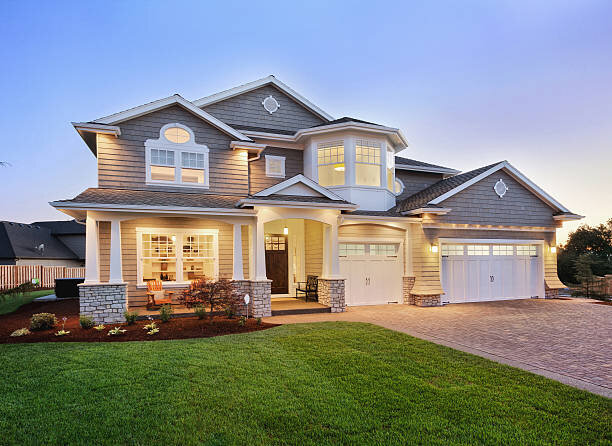
Flipping houses can be a lucrative venture when done right, and Minnesota offers a promising market for real estate investors. However, flipping a house in the Land of 10,000 Lakes comes with its unique set of challenges and opportunities. To ensure a successful house flip in Minnesota, it’s crucial to be well-prepared and knowledgeable about the local real estate market and regulations. In this article, we’ll share four essential tips to help you navigate the Minnesota housing market and maximize your chances of success.
Know the Local Market:
Flipping houses can be a profitable venture, but it’s not a one-size-fits-all strategy. To succeed in the house flipping business, understanding the intricacies of the local real estate market is paramount. In Minnesota, a state known for its diverse neighborhoods, rich culture, and dynamic cities, the real estate landscape is both promising and complex. To embark on a successful house flipping journey in the North Star State, you must first grasp the unique characteristics of your chosen area. Let’s explore this crucial step, “Know the Local Market,” and its key components:
a) Urban vs. Suburban vs. Rural: Determine whether you want to focus on urban properties in cities like Minneapolis or St. Paul, suburban homes in the surrounding areas, or rural properties in the picturesque countryside. Each comes with its unique challenges and opportunities.
b) Neighborhood Selection: Within your chosen location, different neighborhoods may have varying property values, demand, and growth potential. Research the neighborhoods thoroughly to identify the ones that align with your investment goals.
c) Proximity to Amenities: Consider the accessibility of essential amenities like schools, public transportation, shopping centers, parks, and recreational areas. Properties with convenient access to these amenities tend to attract more buyers.
Build a Reliable Network:
Flipping houses in Minnesota, or anywhere else for that matter, is not a solo endeavor. Success in the real estate industry often depends on building and maintaining a network of reliable professionals. In Minnesota, where the real estate market can be intricate and regulations demanding, having a strong network becomes even more critical. Here’s why and how you should “Build a Reliable Network”:
a) Real Estate Agents: A seasoned local real estate agent is your eyes and ears in the market. They can provide valuable insights into market trends, property values, and potential opportunities. Engage with an agent who specializes in the specific area where you plan to flip houses.
b) Contractors and Builders: Establish relationships with reliable contractors and builders who are well-versed in local building codes and regulations. Minnesota’s stringent building standards make it crucial to work with professionals who understand and comply with these requirements.
c) Inspectors: Having a network of skilled home inspectors is essential to ensure that your flipped properties meet safety and quality standards. Inspections are a critical part of the process, and having trustworthy inspectors can save you from costly surprises down the road.
Budget Wisely:
Budgeting is the bedrock of a successful house flipping venture, and in Minnesota’s real estate market, where costs can vary significantly depending on location and season, wise budgeting is even more crucial. To maximize your profitability and minimize risks, follow these guidelines on how to “Budget Wisely”:
a) Acquisition Costs: Begin by calculating all the costs associated with acquiring the property, including the purchase price, closing costs, and any financing fees. Be prepared for negotiations, as getting the best deal on the initial purchase is key to your overall profit margin.
b) Renovation Costs: Determine the scope of renovations required for the property and create a detailed budget for materials, labor, and any unexpected contingencies. It’s essential to strike a balance between cost-effective improvements and quality workmanship.
c) Carrying Costs: Consider the ongoing expenses that will accrue while the property is under your ownership. This includes property taxes, insurance, utilities, and, in Minnesota’s cold winters, snow removal and maintenance. Factor in these carrying costs to avoid unexpected financial burdens.
Renovate Strategically:
Renovating a house is the heart of a successful house flipping project, and in Minnesota’s real estate market, strategic renovations are essential to stand out and attract buyers. To ensure your renovations maximize the property’s appeal and value, consider the following strategies:
a) Initial Property Assessment: Begin by conducting a thorough assessment of the property’s condition. Identify what needs immediate attention, what can be upgraded for added value, and what should be preserved to maintain the property’s character.
b) Budget Allocation: Allocate your renovation budget strategically. Focus on improvements that will have the most significant impact on the property’s value and market appeal. Common areas to consider include the kitchen, bathrooms, flooring, and curb appeal.
c) Energy Efficiency: Given Minnesota’s climate, energy-efficient upgrades can be particularly appealing to buyers. Consider installing energy-efficient windows, insulation, and HVAC systems. Highlight these features to attract eco-conscious buyers and potentially command a higher selling price.
Conclusion:
Flipping houses in Minnesota demands local expertise, a reliable network, prudent budgeting, and strategic renovations. In this dynamic market, partnering with Matt Buys Houses MN, a trusted local company, ensures your success. With their market knowledge and a focus on quality, you’re well-prepared for profitable house flipping in the North Star State.